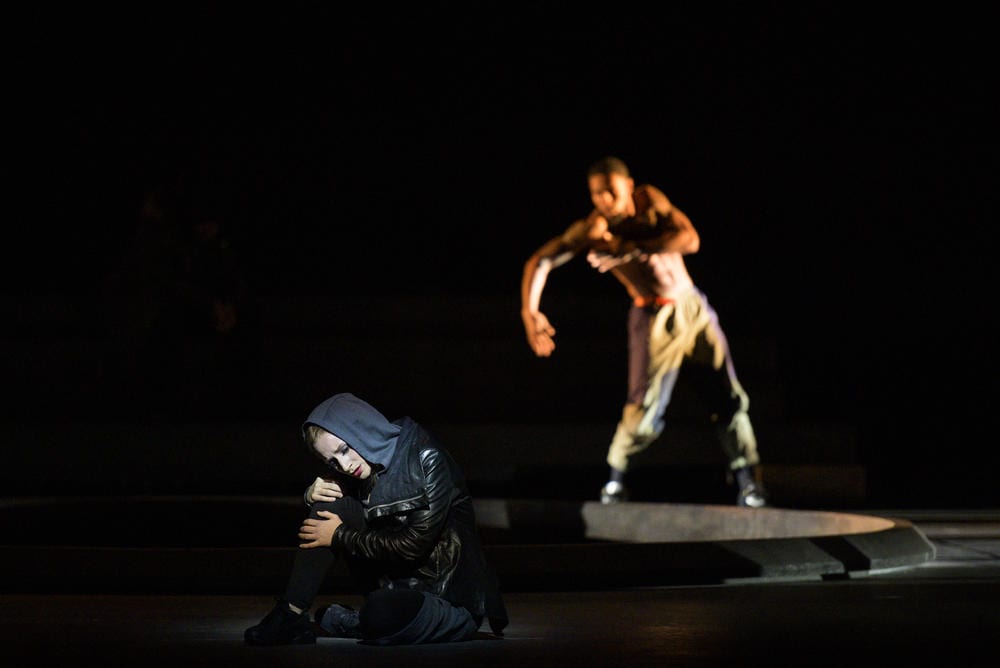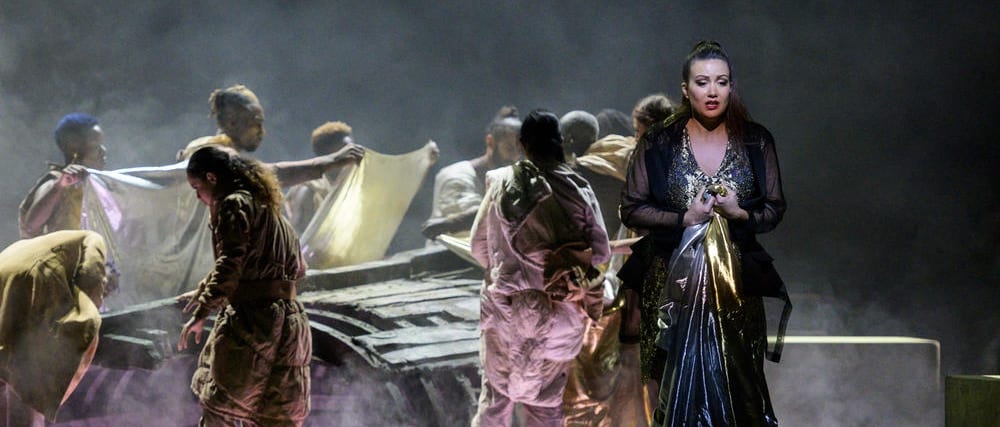Known for his short and feature films and work as a plastic artist, French director Clément Cogitore supervises his first opera this year at the Opéra de Paris Bastille. Les Indes Galantes was written by Jean-Philippe Rameau in 1735. Almost 300 years old, this opera-ballet is considered as typical of both the beginning of the Enlightenment and the Colonization. Hence, how Cogitore managed to modernize such an emblematic political piece of the 18th century ?
The gigantic Opéra Bastille of Paris has more than 2500 seats available. But director Clément Cogitore started his work on the Indes Galantes in 2017 with a short-movie for the online-only video platform of the Opéra de Paris called 3ème scène. In this short sequence, taken from the second part of the ballet (“the Peace Pipe Dance”), Cogitore films three hip-hop Krump dancers in an impressive crowd. The combination between Rameau’s music and the contemporary Krump dance (born in Los Angeles ghettos in the 1990s against police brutality) captivates the spectator of the movie. The dance enhances the music by adding percussions with the foot of the dancers.
In the ballet, composed of a Prologue and three Entrées, Cogitore chose to continue this modernization of the ballet. His idea is to transpose the 18th century idealisation of the Indies (the New World of the Americas as well as Asia or the Middle-East) into our 21th century post-colonial and multicultural world. An ambitious political program that he struggles to fit into an adequate mise-en-scène. The 3h50 ballet is better known for its music than for its libretto, written by Louis Fuzelier. The gap needs to be filled by Clément Cogitore’s work as director, coordinating choreography, set design, lighting, costum design, dramaturgy…and working altogether with conductor Leonardo García Alarcón.

As for the story itself, oldiers of the 18th century are transformed into 21th century cops while Turks, Incas, Persians, “Savages” of the pre-colonial world are the oppressed people of today, migrants or young angry people. The dansers, who can’t be always dancing in the almost 4h-long show, are reduced to walk-on actors in the background, waiting and filling the stage. Few moments are made of danse before the culminating moment of the Peace Pipe Dance, even more astonishing than in Cogitore’s short-movie. The singers are diminished in their role and the combination between their work, the dancers and the music doesn’t feel enough coordinated.
Les Indes Galantes is therefore more a show or a performance than a traditionnal opéra-ballet. The work of the set designer Alba Ho Van and the lighting design Sylvain Verdet (who worked on Cogitore’s movies) are creating a dark and illuminating stage. It is first and foremost impressive by its scale, its length, the number of people on stage (more than 50) and the heavy machinery (an enormous mechanical arm or a LED lighting panel that represents the sun). Cogitore’s Indes Galantes is Impressive but fragile : in conflict with the original work of Rameau but trying to make it beautiful and accessible to most people ; trying to fit hip-hop dancers at the core of the opéra while keeping the singers and the music at the center of the mise-en-scène.
Les Indes Galantes embodies a new breath for the Opéra de Paris and Cogitore’s career. Politically engaged, dancers-focused with its astonishing Krump dance, sometimes clumsy, yet a fresh air carried away by Rameau’s music and Cogitore’s ideas.

